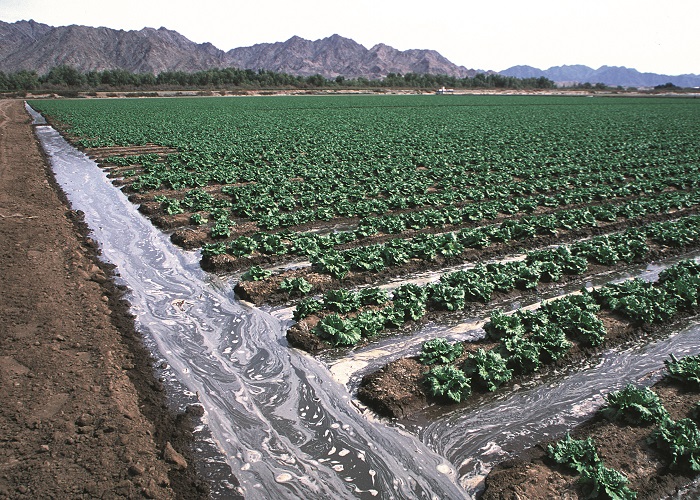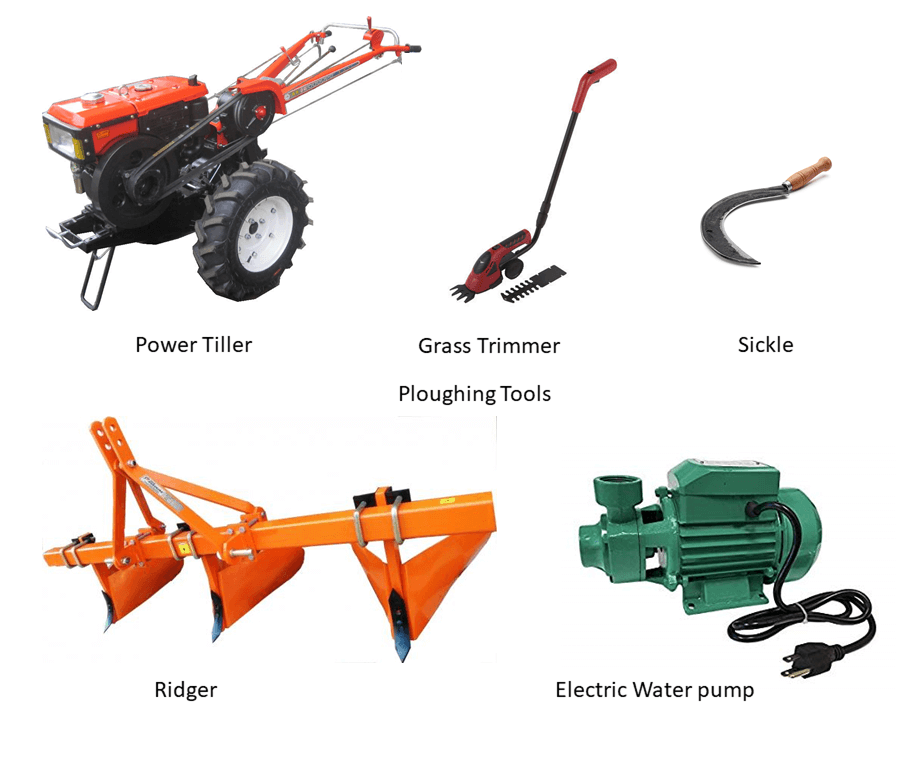There are a lot of ways to set up the irrigation system for an agricultural cultivation project. Tre is various methods of irrigation system like the basin, surface, furrow, border, sprinkler, and drip. For fine-textured soil type, furrow irrigation is the most commonly practiced irrigation type.
In this article a short guideline on description, suitability, application, and maintenance of furrow irrigation is presented.
What is Furrow Irrigation?
Furrow irrigation is a method of laying out the water channels in such a way where gravity plays the role of providing just enough water for suitable plants to grow. It is usually made by the planned placement of ridges and furrows. It is a kind of surface irrigation system.
A ridge is the part of the layout of the field that is elevated at different angles based on the type of soil. This is actually where the plants are planted. The furrows are the troughs that let the water flow through it.

Why Use Furrow Irrigation?
Furrow irrigation is a more preferred way of irrigation primarily for two reasons –
- Cost reduction for irrigation
- A more guaranteed higher yield.
If these two factors are viable enough for your purpose, then furrow irrigation is more than just a good option for you. {adselite}
When to Use Furrow Irrigation?
In order to know whether the furrow irrigation method is suitable for your purpose or not, you need to have prior knowledge about some of the common factors of a field. After all, “A little knowledge is a dangerous thing.” Hence, to prevent such a phenomenon from happening, here are some of the main factors to be considered while using the furrow irrigation method -
Soil
The key feature to keep in mind while selecting soils for furrow irrigation construction is the aggregating capacity of the soil. Simply put, the less soft it becomes in contact with water, the more suitable it is for furrow irrigation. This puts sandy soils as the least suitable since water regulation will be absent.
Soil types like clay, loamy and silty soil are very much suitable for furrow irrigation.
Plants
Noticing furrows in the backyard of a house in a patch of the vegetable garden is a very common sight.
Thus, we can easily assume that furrow irrigation is very suitable for most crops and vegetables. It is very benefitting as a process when the roots need regulated contact with water but contact with the stem or other parts would cause harm (Hence the elevation).
For example, growing row crops like wheat, maize, and paddy, some fruits and obviously most vegetables can use this method for proper results.
Slopes
Sloping for furrow irrigation is not extremely done. Still, it does need to be adjusted slightly according to the type of soil present. The table below charts out the suggested angles for the slopes during furrow irrigation construction –
| Soil Type | Optimum Slope (%) |
|---|---|
|
Sand |
0.5 |
|
Sandy Loam |
0.4 |
|
Loam |
0.3 |
|
Silt Loam |
0.2 |
|
Clay Loam |
0.1 |
|
Clay |
0.05 |
Furrow Planning
A lot of factors need to be kept in mind while implementing the furrow irrigation design. The crucial factors at play and important notes to keep in mind during the furrow planning design are -
Shape
There are two prime factors that you need to consider while creating the shape and size of the furrows. They are –
- Soil Type – If the soil is sandy, the furrows should be rather deep and narrow. This is because sandy soil has less impenetrability. On the other hand, if the soil is clay-like, then the furrows should be shallow and wide. The reason is more impenetrability and thus more presence of water in contact with soil for optimum wetting.
- Water Stream Flow – If the water flow is more, the furrows should be bigger and deeper in size for increased holding capacity of water.
Length
Factors affecting the length of furrows are –
- Slope – A maximum and minimum of 0.5 to 0.05% slope range of the soil will determine the length of the slope. The steeper a slope is, the longer a furrow can be.
- Soil Type – The sandier a field is, the shorter the furrow will be. A vice-versa situation applies to clay-like soil.
- Stream Size – To avoid soil erosion, it is advised to keep the water flow not more than 3 liters/sec and not less than 0.5 liters/sec. (Subject to changes based on soil)
- Irrigation Depth – The deeper a furrow, the more it can contain water, and hence, the longer it can be.
- Cultivation Practice – If you require cultivation frequently, try shorter furrows.
- Field Length – The ideal size can be overlooked and can be adjusted to the length of the field. You may find this contradictory but this a choice between optimization of space and more yield rather and an ideal length where the prior is suggested.
Space
For planning the space, you should keep these two factors in mind –
- Bed Soil – This too depends on the soil type a lot. For coarse to fine sand to clay soil, the lesser penetrable the soil is the lesser spacing respectively. This is due to differences in the depth of furrows in the length section above.
- Cultivation Procedure – Oftentimes, you will see a dissimilarity between the furrowing tool and the space required for the plants from one row to another. Both these characteristics need to be brought in half ways to ensure proper reach of soil to the roots.
Furrow Application Steps
For the application of the furrow irrigation construction design, you can follow these steps –
- Drawing the Furrows - The furrows can be marked out with chalk before taking out a ridger and creating furrows. Poles too can be used to achieve more accuracy.
- Ridging – The furrows need to created with a ridger as long as the chalked-out areas are not drawn in straight lines.
- Equal Distancing – The distance between two ridges should be at least 5 meters. For easier maintenance, you could use a four-ridging drawbar.

Furrow Maintenance
Maintaining furrows can be funneled down to some simple steps for you to remember –
- Checking proper water flow downstream
- Ridges should not erode to the furrow level
- Keeping weed under control
- No dry spots in furrows

